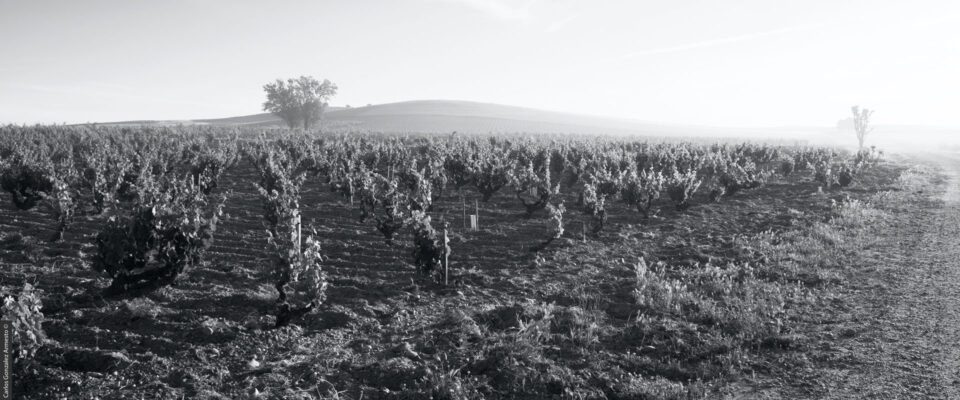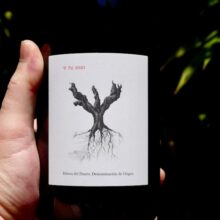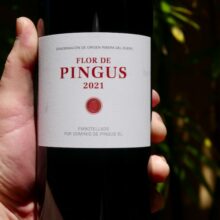
Winery
Dominio de Pingus
About Dominio de Pingus
Pingus was established in 1995 by Peter Sisseck, Danish-born and French-trained, with significant experience in Bordeaux and Sonoma. Simi Winery and Chateau Landiras (run by his uncle Peter Vinding) were his winemaking testing ground, beyond which he also has qualifications in agricultural engineering. Peter has been working in Ribera del Duero since 1990. A brief-seeming consultancy gig resulted in a deep fascination with the untapped potential of this extreme and contradictory region, which has become very much ‘home’. Peter is involved in a number of projects in Ribera, and also runs his own Bordeaux domaine.
Peter was acquired as winemaker-manager by the original owners of a then-new project in Ribera del Duero. Hacienda Monasterio was an ambitious Bordeaux-styled estate purchased and planted from scratch to Tinto Fino plus French and Italian varieties in the Valladolid sector in the west of the DO. The Monasterio project has struggled from day 1, never really reaching its ambitions. The wines are still in production, but are very expensive and not as good as they need to be. Peter has since ‘re-done’ the idea behind Hacienda Monasterio, getting it right by building it from the ground up himself … the relatively young Quinta Sardonia estate succeeds marvellously in realising Monasterio’s aim of an estate using mixed Tempranillo+Bordeaux varieties. But that’s a separate story (please read elsewhere on our website to get the low-down on Peter’s other two ventures in the region, Quinta Sardonia and PSI).
Frustrated from the ownership level, Peter eventually severed ties with Monasterio, by which time Dominio de Pingus was well and truly alive. Monasterio did, however, give him the needed introduction to the grassroots (well, vine roots, actually) of Ribera del Duero. In seeking to get Monasterio right, he refused the usual way of the flying or consulting winemaker (importing certainties and technologies from elsewhere). Rather, he got as close to the ground as he could to see what really made Ribera del Duero tick. Not surprisingly, soil, site and viticultural stock were his key research interests. This ‘blow-in’ ended up doing more to identify and understand authentic Tinto Fino in Ribera del Duero than had previously been achieved.
In the Vineyard
Tempranillo AKA Tinto Fino
Tempranillo’s local name is Tinto Fino and is also sometimes called Tinto del Pais. It is not Tempranillo by another name, but a distinct familial strain, as is Tinta de Toro, the version of ‘Tempranillo’ native to Toro, west along the Ribera of Rio Douro. These familial distinctions are more significant than clonal variations, which occur at a local level. So, sniffing around the old plantings, and talking to the old-timers of Ribera during the early 90s, Peter did his own work in identifying Tinto Fino, distinguishing it from ‘Tempranillo’, and identifying several key clonal variations within the local Tinto Fino. Likewise he combed the various sub-regions looking at different soil and micro-climates and eventually located what he thought was the ideal combination of site, clonal selection of Tinto Fino and old bush vines pruned ‘en vaso’. Three ancient plots near to one another in the ‘La Horra’ zone between Roa and Aranda del Duero in the central part of Ribera del Duero were acquired and became the basis of Pingus (one nowadays is the base of Flor de Pingus). Similar plots constitute Flor de Pingus, and more lately the regional project PSI. Altitude is 800-850 metres.
The wines of Dominio de Pingus are essentially acts of vine husbandry. The gnarled old vines have been carefully husbanded back to health – the trunks straightened, lowered, and pruned back to 1-2 buds per stump. Yields tend to an incredibly low 9 hl/ha. “Tinto Fino is important,” he explains. “A lot of cuttings of Tempranillo have come in from Rioja, so not all vineyards in Ribera del Duero are Tinto Fino. There is a difference. All the vines in my plots are very old. They have never been fertilised nor treated with pesticides and all grow following the traditional en vaso system. They are perfect.”
The old vines of Ribera del Duero’s native strain of the Tempranillo family are rare, and becoming more so. In 1990, there were only 9000 hectares under vine in the DO and 6000 of these were old Tinto Fino bush-vines planted en vaso. Nowadays, there are 22000 ha and only 4000 of these are old locals. Worse, much of the new industrial planting is ‘Tempranillo’ grown on trellis – higher-yielding, easy-to-grow generic clones from Rioja. Ribera del Duero is being de-natured just as it becomes popular … and the ‘Conejo Regulador’ (the official bunny of the big companies, the CRDO or Consejo Regulador DO Ribera del Duero) sits silently in observation, taking his tithes and keeping it zipped. I attempted to interview him on the matter and he proved an adept at shape-shifting-refusal to address the point.
Thus, Pingus (and PSI) are not just bottles of amazing booze – they are a regional-cultural legacy, a heritage conservation project.
In the Winery
Pingus
Pingus is based on two clos vineyards of great age and perfect natural balance, pretty much adjacent to one another affect an ‘estate’ of 4.5 hectares just sout-west of La Horra on the way to Roa. ‘Barroso’ is old gravel-sands over silt and calcareous bedrock near the Duero, and higher up ‘San Cristobal’ is a south-west facing clay slope. Peter actually treats them as five separate parcels made in 5 old wood Tinas (2000 litre foudre), then aged as per Flor. One of these, ‘Amelia’ is a small ungrafted section of San Cristobal (otherwise on Riparia rootstocks) which yields a single barrel. Barroso yields deeper, lighter, long and finesseful fruit, compared to the fuller-blockier fruit from the gravel-silt slope of San Cristobal, planted around 1910 (the rest were planted in 1929).
Around 500 dozen are produced. Part of the fruit is de-stemmed by hand and goes through an individual berry selection; some of the fruit is selected for a version of whole-bunch fermentation, whereby exemplary parts of the bunch are selected and cut for fermentation with stems. The natural yeast fermentations are cultures selected from the two Pingus vineyards and then inoculated across all fermentations.
Flor de Pingus
Flor is a village wine from 18 parcels across 21 hectares and various soil types in and around La Horra, between Roa and Aranda de Deuro. Each parcel is fermented separately by indigenous yeasts selected from the Pingus vineyards. 16 small stainless steel foudre are then blended, go through malo in barrique and are then aged 16 months or so in 30% new barrels, and the rest 1-3 years old.
Where in the World is Dominio de Pingus?
Dominio de Pingus located in Quintanilla de Onésimo in the Province of Valladolid with vineyards in La Horra area of the Ribera del Duero in the Castilla y León region of Spain.

